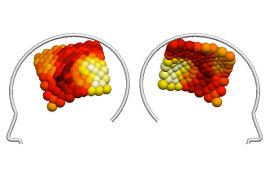
A study by University of Texas scientists has found that chronic marijuana users have a smaller orbitofrontal cortex (OFC), but increased brain connectivity.
In Proceedings of the National Academy of Sciences, the researchers describe how they compared adult marijuana users and gender- and age-matched non-users, accounting for potential biases such as gender, age and ethnicity.
On average, the marijuana users who participated in the study consumed the drug three times per day. Cognitive tests show that chronic marijuana users had lower IQ compared to age-and gender-matched controls but the differences do not seem to be related to the brain abnormalities as no direct correlation can be drawn between IQ deficits and OFC volume decrease.
“What’s unique about this work is that it combines three different MRI techniques to evaluate different brain characteristics,” said study author Sina Aslan. “The results suggest increases in connectivity, both structural and functional that may be compensating for gray matter losses. Eventually, however, the structural connectivity or ‘wiring’ of the brain starts degrading with prolonged marijuana use.”
The greatest increases in connectivity appear as an individual begins using marijuana. The findings show severity of use is directly correlated to greater connectivity.
“Although increased structural wiring declines after six to eight years of continued chronic use, marijuana users continue to display more intense connectivity than healthy non-users, which may explain why chronic, long-term users ‘seem to be doing just fine’ despite smaller OFC brain volumes,” offered study co-author Francesca Filbey. “While our study does not conclusively address whether any or all of the brain changes are a direct consequence of marijuana use, these effects do suggest that these changes are related to age of onset and duration of use.”
The study offers a preliminary indication that gray matter in the OFC may be more vulnerable than white matter to the effects of delta-9-tetrahydrocannabinol (THC – the main psychoactive ingredient in the cannabis plant). According to the authors, it also provides evidence that chronic marijuana use initiates a complex process that allows neurons to adapt and compensate for smaller gray matter volume, but further studies are needed to determine whether these changes revert back to normal with discontinued marijuana use, whether similar effects are present in occasional marijuana users versus chronic users and whether these effects are indeed a direct result of marijuana use or a predisposing factor.
Related:
Discuss this article in our forum
Marijuana memory problems prevented with Advil
Scientists scope effects of marijuana ingredients via MRI
Marijuana farms impacting fragile ecosystems
Marijuana users have smaller waists, better blood sugar control


















Comments are closed.